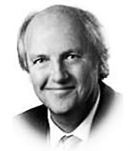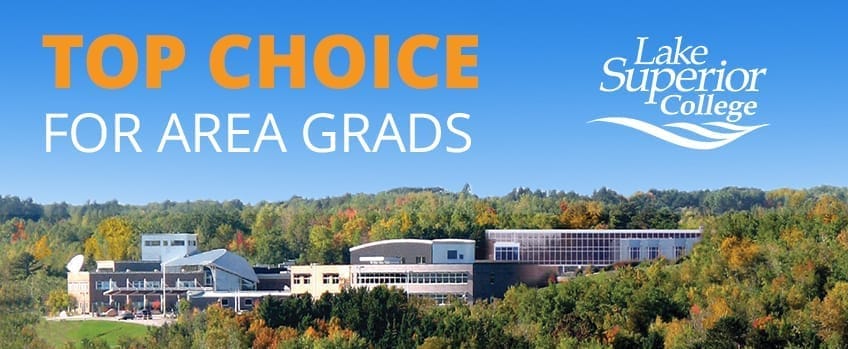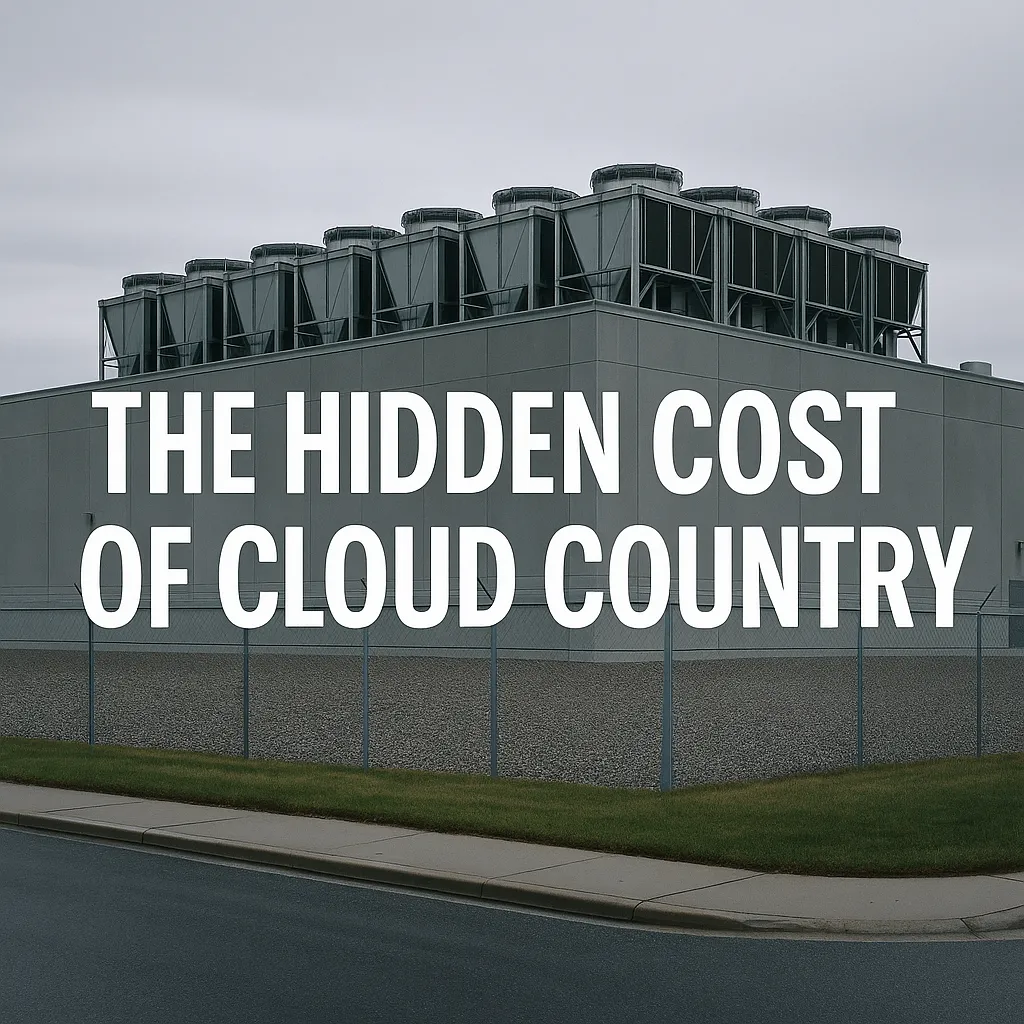
Howie's column is powered by Lyric Kitchen · Bar | eMail Howie
They said it would bring jobs, innovation, and a bright digital future.
What rolled in instead were trucks, chain-link fences, and a low mechanical hum that never stops. The machines are here now — hundreds of thousands of servers blinking away inside windowless fortresses on the edge of Minnesota towns that once dreamed of something better.
We’ve seen this movie before. Same script, different salesman.
They call it “the cloud,” as if it floats harmlessly above us. Truth is, it squats on farmland, burns more juice than 50,000 homes, and guzzles water like a drunk at closing time. And somehow, we’re supposed to call it progress.
Developers appear in pressed suits talking about “the digital backbone of America.” City officials beam like they’ve just landed the Twins’ spring training site. The handshake’s barely dry before someone slides an NDA across the table and says, “You didn’t see this.”
We saw it. We’ve been seeing it for decades. Different industry, same hustle.

The cloud, it turns out, is just a warehouse full of heat. And we’re the ones paying the power bill.
They call it a partnership. Sure. The same way a mosquito partners with your arm.
After construction wraps — and the out-of-town contractors head back to wherever they came from — a data center might employ forty, maybe fifty locals if you count the janitor and the guy who fixes the soda machine. But the ribbon-cutting speeches will still brag about “hundreds of jobs created,” because math bends when politics enters the room.
Ask Chaska how that turned out. Three data centers at West Creek brought in about $1.3 million in city property taxes in 2022. Sounds good until you realize the total investment runs in the hundreds of millions. That’s like buying a new F-150 and getting back a $12 rebate.
Even Chaska’s own testimony to lawmakers admits it: a $750 million project might kick out three to six million bucks during construction and maybe $600,000 to $1.4 million a year after that. I’ve seen Girl Scout cookie fundraisers pull better margins.

Meanwhile, those blinking boxes are slurping up enough electricity to brown out the grid if someone sneezes. Utilities are racing to build new natural-gas lines just to feed these beasts. And then there’s the cooling — millions of gallons of clean water turned into warm steam so some social-media ad farm can load a cat video faster in Phoenix.
But hey, it’s “green technology.” Just ask the PR guy with the carbon-neutral PowerPoint.
The worst part isn’t the heat or the hum — it’s the secrecy.
Local councils sign nondisclosure agreements before they can even tell residents what’s being built behind the fence. “Competitive reasons,” they say. Translation: You might not like the deal we’re making on your behalf.
By the time the public catches wind, the zoning’s changed, the subsidies are inked, and the same folks who preach transparency are posing with golden shovels and hard hats. If this is openness, I’d hate to see a cover-up.

Over in Rosemount, the state stood shoulder to shoulder with Meta to announce an $800 million “digital campus.” You’d think a project that size would warrant a few basic facts — maybe how much the city will actually collect each year in taxes. Instead, the press release just promised “millions.” Millions of what? Smiles? Headaches?
That vagueness isn’t an oversight. It’s a strategy. These companies know once real numbers hit daylight, the spell breaks. Nobody likes realizing they’ve traded a decade of tax relief for a windowless cube that doesn’t even buy a cup of coffee at the local diner.
I’ve lived long enough to know a hustle when I see one. And this one’s got the whole choreography down. Promise jobs. Whisper “sustainability.” Hide behind an NDA. Watch the mayor grin for the cameras. Then build your data fortress, lock the doors, and send the profits straight to Silicon Valley.
Cities call it “economic development.” That’s generous. It’s more like a high-tech storage unit we’re paying to keep.
A data center doesn’t sponsor the youth hockey team. It doesn’t grab a burger after the Friday game. It doesn’t walk into City Hall unless something breaks. It just hums — forever — while locals keep footing the tax bill for schools, parks, and potholes.

And when the numbers don’t add up, there’s always a new word for the same old game. Minnesota lawmakers even created a “fee” for big data centers — two to five million bucks a year based on peak power demand. It’s not a tax, mind you. Heaven forbid. Just a “fee.” You can waive a fee. You can negotiate a fee. That’s why they love it.
If these projects were the jackpots we’re told, they wouldn’t need lawyers to rename the taxes.
Let’s be honest: we’re not competing with Iowa. We’re competing with our own gullibility.
Developers dangle a future full of servers and sensors, and we drool like it’s 1956 and U.S. Steel’s hiring again. We can’t resist the old line: “This time, it’s different.”
No, it’s not.
We’ve seen taconite. We’ve seen timber. We’ve seen call centers and ethanol and every shiny thing that came with a consultant’s promise of “jobs, growth, and stability.” The moment the subsidies dry up, they ghost.

And when they do, we’re left with another sealed building and a fading sign that says “NextEra Data Solutions” or “Northern Cloud Campus.” Then we start the next dance with the next suitor.
So here’s a simple suggestion. The next time someone shows up in your council chambers waving an artist’s rendering and saying the word “innovation” every other sentence, ask them four questions:
How many permanent jobs after construction?
What’s the annual property-tax payment, in dollars?
What breaks are you getting, and for how long?
And how much water and power will you drain from my town every year?
If they won’t answer straight, show them the door.
Because here’s the truth the brochures won’t print: these things can hum anywhere. They pick us because we’re polite, cheap, and eager to feel important again. We’ve spent decades trying to replace the factory whistles that used to tell us who we were. The tech guys figured that out and turned it into a business model.

The irony? The “cloud” they sell us is just somebody else’s server rack running on our dime. The electricity comes from our grid. The roads to reach it are our asphalt. The silence afterward — that’s ours too.
What we’re buying isn’t progress. It’s the illusion of relevance.
And when the last server light flickers off — maybe thirty years from now, when the next miracle technology comes along — the suits will move on, leaving us with another empty box and another story about what might’ve been.
The old fellas at the café won’t need a study to understand it. They’ve seen this dance too many times before.
They’ll sip their burnt coffee, shake their heads, and say what they always say when the next “big thing” blows through town:
“Should’ve just built another rink.”




